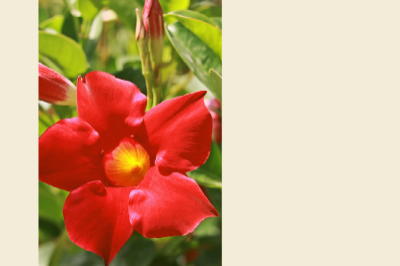What Does a Mandevilla Plant Look Like
Mandevilla plants are quick to grow. After eliminating any other reason for slow growth, move them into a larger container. They require acidic soil with an appropriate balance of organic matter. You can amend the soil using compost and feed it twice per month with an appropriate liquid fertilizer. The plant should be watered frequently, although it prefers a slightly dry soil. To ensure that the plant is humid it is possible to moisten the leaves.
Choose a place that is sunny and has enough sunlight when you are choosing a spot for your plant. Mandevilla can tolerate some shade but it won't flower as well in too many. Mandevilla can be moved under a patio roof or shade tree during summer. Root rot is prevented by ensuring that the soil is well-drained. Mandevilla plants can be killed by soil that is heavy. It is recommended to choose a loose, well-drained soils that have a lot of organic material.


